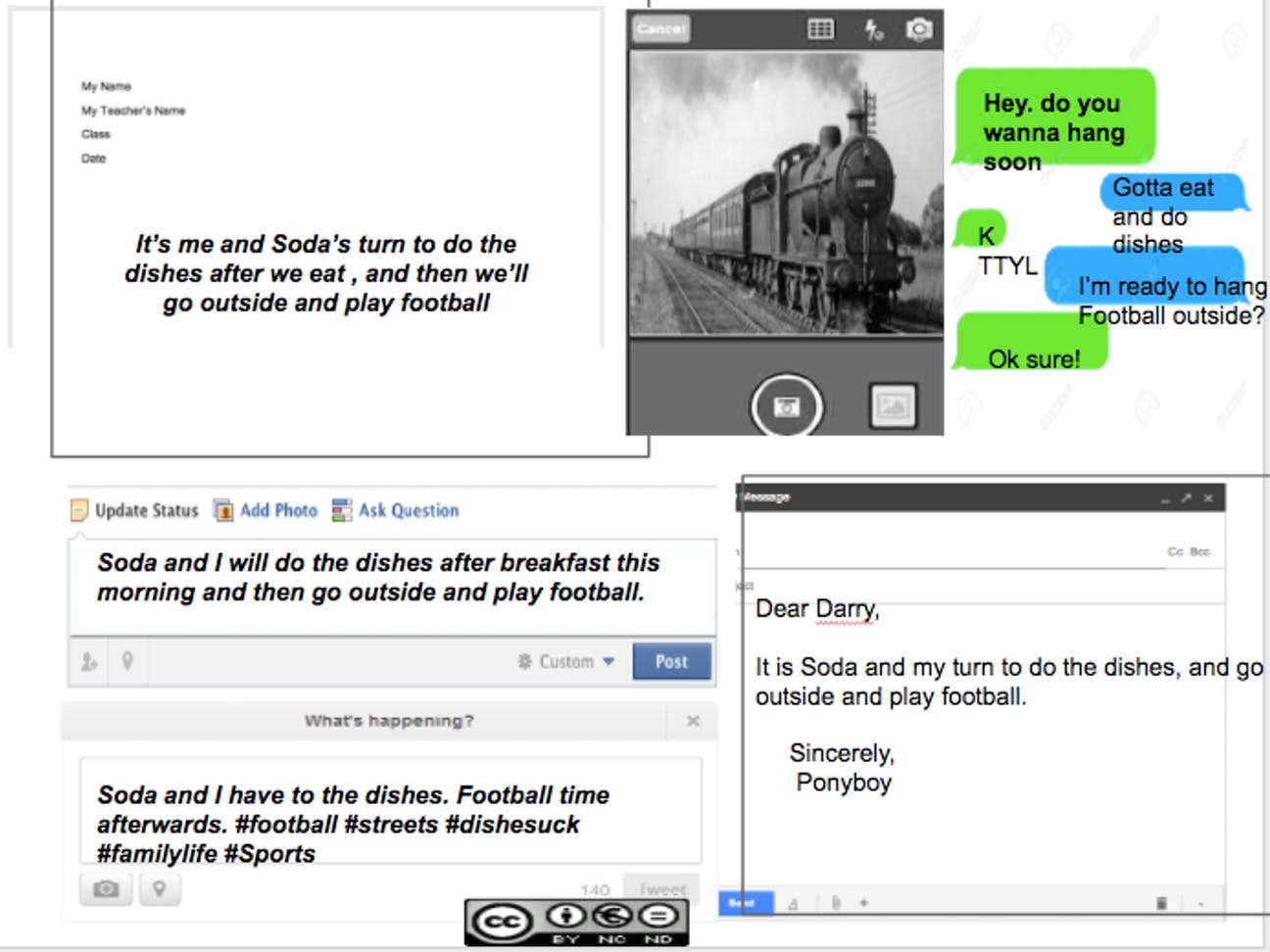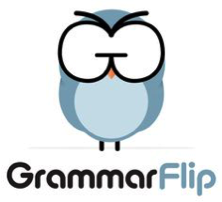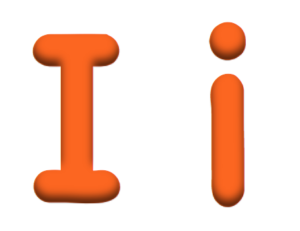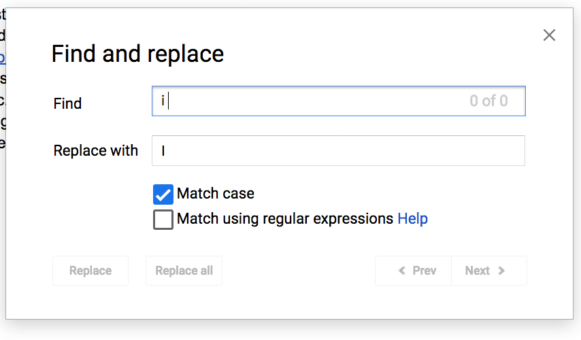Helping Student Writers Learn to Code Switch
This year my teaching assignment shifted slightly in the Language Arts world. I am now teaching 6th and 7th graders after teaching 8th grade for the past five years.
It’s been awhile since I have taught either grade and in just four short weeks of school, I’ve had an eye opening experience!
Formal vs. Informal Writing
One of my first writing goals, with both 6th and 7th graders, has been to help them distinguish between formal and informal writing tasks. I always start by introducing the grammar template (see image below) that I discussed in this story at EdSurge about the use of technology in school.
Simply put, the template helps students explore what grammar, types of sentences, etc. might look like in both formal and informal settings – an early step toward learning to “code switch.” As a class we delve into these different writing spaces to help them understand the various kinds of places they might write and to let them know that, as their teacher, I respect those spaces that are often outside the formal structures of the classroom.

Jeremy’s grammar template using an Outsiders example. (See the blank version.)
My students and I spend approximately 30 minutes discussing whether a particular writing space is formal or informal. My students always surprise me when they start discussing audience and how certain spaces they write in (social media, for example) can be formal or informal, depending on who they may be talking to at the time.
Most students are able to differentiate among their writing spaces to some degree, but I don’t feel they get enough practice writing in both spaces to help them better understand how their writing should look for different audiences.

Writing a Formal Email
As my 6th graders worked through the template, I scaffolded the lesson and directed them to write a formal email.
My colleagues and I agreed four years ago that students needed to learn to write formal emails not only as a necessary real-life skill for a potential job, but also because the emails we were receiving from them ourselves were riddled with errors. What’s more, students did not know how to effectively ask for homework information, to deal with missing assignments, or to simply ask questions clearly enough to get good answers.
As the 6th graders worked through their assignment and began to turn email in, I found it very alarming that they struggled with the format of writing an email. My thought here is that the art of writing a letter (much like an email) has been lost, and, furthermore, students aren’t using email nearly as much as adults might and definitely not as much compared to spaces such as Snapchat, Facebook, or Instagram.
I-i, Captain
While my 6th graders were finishing up their formal emails, the 7th graders were working on a short narrative titled “About Me” – an assignment that lets me take some measure of their writing skills and also get to know each student better.
Because I wanted to formally assess my new students’ writing skills, I didn’t give them much direction beyond “please don’t answer these questions like you would a worksheet.” This gave me a chance to see if they could separate ideas into paragraphs. I also wanted to make the point that writing isn’t always about following a format – that writing can be relaxed and even a bit messy.
After I gave my students some time to compose their writing, the day came for them to share their results with me via Google Docs. With my help, students put the proper heading on their paper following MLA formatting and then they shared their mini-biographies with me.

This I/i confusion has always been an issue, but this year it seems particularly troublesome. So, to help my students fix this problem and so I don’t have to face all those lower-case I’s throughout the year, I showed them a quick writing hack.
In Google Docs if you press Control F (otherwise known as the find feature), a box pops up in the upper right hand corner and students can then type in the letter “I” and hit the space bar. It will show them all the places they used the proper pronoun. A quick review will show where the lower-case i is incorrectly used. They can fix the mistakes (and even learn to do a “find and replace” procedure – Control H for PCs and Command-Shift-H for Macs).
Before the students hand in a writing assignment, I always have them do this helpful hack so the problems are corrected before I grade the work. By the end of the year, it has become a habit and my students do it on their own. This helpful tactic is discussed further in chapter 6 of From Texting to Teaching: Grammar Instruction in a Digital Age.
As a teacher, I do not blame technology for the way students write, nor do I let it be an excuse. Students do need to learn how to code switch from their informal to formal spaces. This takes practice and with that practice, they will become better writers in all the spaces where they write.
Final Thoughts
No matter if the problem is confusing formal versus informal writing or not paying attention to capitalizing the right letters, it’s becoming more clear to me that today’s students are much different writers than we were in middle and high school.
Students have more spaces in which to compose their thoughts – spaces where the “rules” are different – and at the middle school level, this can be daunting. Though language arts teachers have enough on their plates as it is, I feel it’s time we make a bold shift in how we teach writing to our students today, recognizing that they spend a lot of their time writing in informal settings where the rules and conventions are very different.
This will require a shift in our thinking as teachers. We need to accept that today’s digital students will always write in informal ways, taking shortcuts as they rapidly communicate in texting and social media spaces. Our job is to show them that they need to develop the ability to write in two worlds, and also to show them how.





































Hi, Jeremy. I teach 7th grade ELA in Wyoming. Thanks for the helpful reminder of the “i to I” find and replace. I had a question about GrammarFlip and wondered how often you use it. Happy weekend!
Hi Jennifer!
First, thanks for reading, I appreciate the support. I hope things are well in Wyoming. I use GrammarFlip once a week with my students. I assign the lesson on Monday and they have until Thursday to complete the lesson outside of class. Then, on Fridays, we go over the grammar concept and I try to do an activity with them such as a game, watch a fun video, create engaging posters, etc. The students seem to do well with this. Those students who don’t finish the lesson can not participate in the activity and must complete the lesson while the others can do something fun. If you have any other questions. Please reach out to me. Enjoy your weekend.